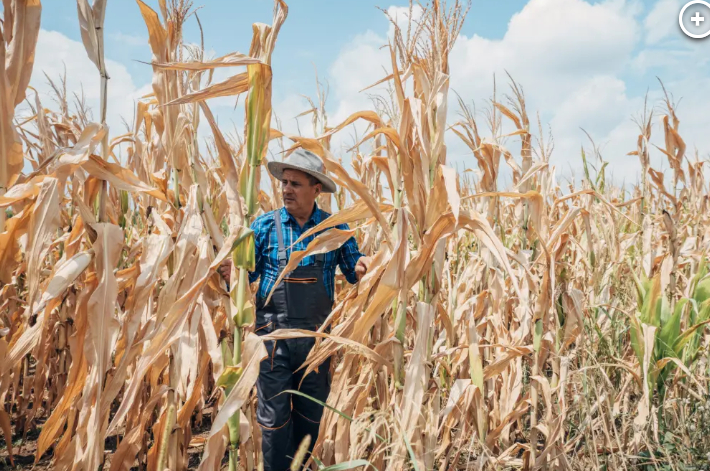May 28, 2025 | 09:34 GMT +7
May 28, 2025 | 09:34 GMT +7
Hotline: 0913.378.918
May 28, 2025 | 09:34 GMT +7
Hotline: 0913.378.918

Even with the decrease in wheat production from the recent droughts, Schemm says the country won’t run out of wheat. Photo: Getty Images
Through NASA modeling and measurements, an estimated two-thirds of Kansas’ wheat crop has faced extreme or exceptional drought conditions.
The state is the largest producer of winter wheat and, according to the USDA, produces about 332 million bushels a year.
Early estimates put 2023 production totals at about 191 million bushels, which is lower than the 10-year average and below the 260 million bushels harvested in 2022.
Kansas farmers said they’ve heard about growers losing about 90% of their crops due to the drought and said there is little time to turn the situation around.
“When the wheat came out of winter dormancy, it did not look very good,” said Lisa Schemm, a wheat farmer in Sharon Springs, Kansas. “We did end up with some rains in late April and May, which was great for our wheat crop, but if you went 30 miles south, it was too late.”
Winter wheat is typically planted during the fall and goes into a stage of dormancy over the winter. The spring months make up the prime growing season, with harvesting usually taking place in early summer.
When rain has fallen, it has come in the form of thunderstorms which can be just as detrimental to crops, with damaging wind gusts and large hail.
“When we have gotten storms, they’re coming with massive amounts of hail, and any little hailstone or even a 40- or 50-mph wind will start to shake the stock and cause the berries to drop,” said Schemm.
Since the start of the year, Kansas has seen nearly 500 reports of severe weather, with sizable hail and wind gusts accounting for 95% of all reports.
Despite the adverse weather, Schemm said the crops’ quality is exceptional this year despite relatively low quantities.
“When we get short on moisture, what happens is it puts all of its energy into the reproductive parts of the plant. So, in essence, the wheat flower will end up with higher protein,” Schemm stated.
The farmer said that with the country’s extensive production facilities, the nation won’t run out of wheat, but exports could be reduced depending on production.
Agricultural experts with the University of Illinois said drought conditions are not only impacting wheat. The extreme weather could also affect corn and soybean production.
Iowa, Illinois and Minnesota are some of the largest producers of the vegetables found in grocery stores and many communities are dealing with moderate to severe drought conditions.
“Mid-June dryness and drought can lead to a widespread drought like in 2012, resulting in large yield losses,” authors of Farmdoc Daily wrote last week. “However, the possibility of large yield losses is not a foregone conclusion. Any rain between now and early July could mitigate current dry conditions.”
Corn is typically harvested in the late summer and fall, and soybeans are typically picked in late September at the earliest.
These crop cycles mean there are plenty of opportunities for additional rainfall to minimize drought losses.
“A combination of higher prices, crop insurance payments, and disaster payments could at least partially offset losses and still result in relatively good income levels for grain farms in 2023,” Farmdoc Daily authors wrote.
Schemm said her corn crop is in decent shape but is hoping and praying for rain to help minimize any losses during the final stretch before harvesting.
(nypost)

(VAN) Vikas Rambal has quietly built a $5 billion business empire in manufacturing, property and solar, and catapulted onto the Rich List.

(VAN) Available cropland now at less than five percent, according to latest geospatial assessment from FAO and UNOSAT.

(VAN) Alt Carbon has raised $12 million in a seed round as it plans to scale its carbon dioxide removal work in the South Asian nation.

(VAN) Attempts to bring down the price of the Japanese staple have had little effect amid a cost-of-living crisis.

(VAN) Fourth most important food crop in peril as Latin America and Caribbean suffer from slow-onset climate disaster.

(VAN) Shifting market dynamics and the noise around new legislation has propelled Trouw Nutrition’s research around early life nutrition in poultry. Today, it continues to be a key area of research.

(VAN) India is concerned about its food security and the livelihoods of its farmers if more US food imports are allowed.